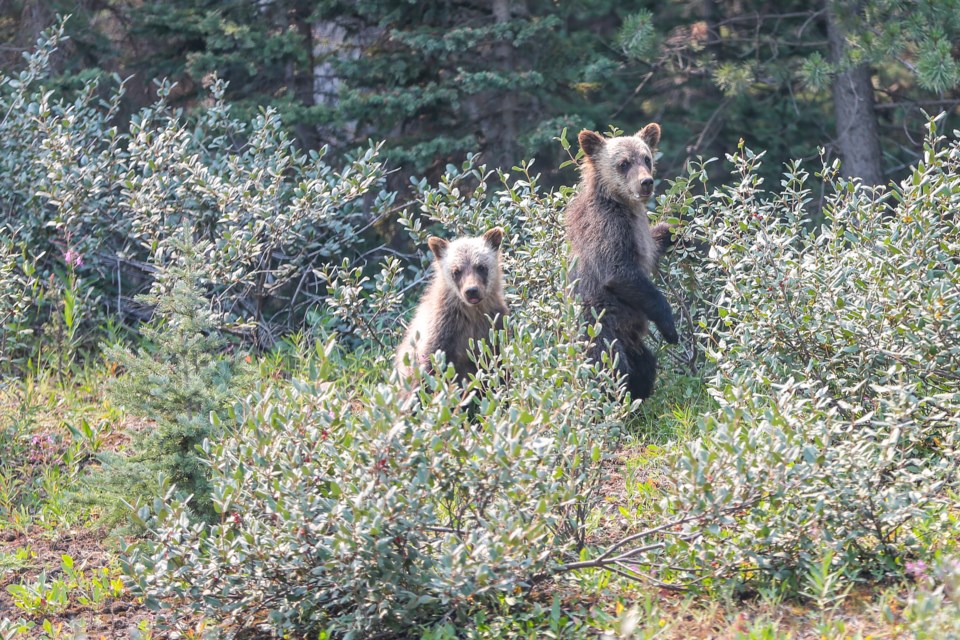Some Kananaskis Country residents are voicing concerns about wildlife safety during the G7 Summit of world leaders in June, particularly for threatened grizzly bears that call the area home.
With extraordinary security measures planned, armed security forces will be patrolling the woods and backcountry before and during the June 15-17 summit, raising fears of potentially trigger-happy personnel unnecessarily killing a bear.
“My concern is what does the wildlife mitigation look like for this whole operation,” said long-time K-Country resident Ken Hoover.
“There’s going to be a lot of people running around with guns, so is someone going to shoot a grizzly? Are they trained in wildlife aversion?”
Grizzly bears are a threatened species in Alberta.
There are an estimated 60 grizzly bears in all of Kananaskis Country throughout the year, but many cross boundaries into other jurisdictions too. Depending on the season, there can be about 20 grizzly bears in the Kananaskis Valley at one time.
Hoover said the Nakiska ski hill, which will be heavily used for the summit for security purposes, is commonly used by grizzly bears.
“It’s kind of the main slope for the grizzlies when they come down,” he said.
“When you live and work in the park you get concerned for the things that make this valley so special, so we are all concerned about what will the plan look like for wildlife.”
Ahead of the 2002 G8 Summit in Kananaskis Country, eight grizzly bears were captured and fitted with tracking collars, a move designed to let armed security forces know the whereabouts of bears at all times.
Five male grizzly bears and three female bears were captured and collared in the Kananaskis Valley region during an intense provincial trapping program.
The radio collars allowed bears to be tracked if they came too close to security forces or delegates walking through the forest, and also protected bears from a heavy presence of security personnel patrolling the backcountry.
At the same time, it allowed researchers to gather significant data on the bear population in the area. The trapping and collaring program was paid for by the G8 office of the day.
Karelian bear dogs – small husky-like dogs from Finland bred to hunt bears – were bought in for the last summit. The intent was that bears were not to be harmed or relocated, but shepherded away by bear dogs from world leaders and security personnel.
Last time, security patrolling the front and backcountry were also given strict instructions not to shoot grizzly bears. They were given bear spray and firecrackers and taught how to react if they encountered a bear.
For this year’s G7 Summit, the Integrated Safety and Security Group (ISSG), which is led by the RCMP and includes the Calgary Police Service, the Alberta Sheriffs Branch, Alberta Conservation officers and the Canadian Armed Force, is running point on security.
While there are no specifics just yet, Fraser Logan, a spokesperson for ISSG, said there will be a team focused on wildlife safety.
He said there will be information and training sessions for security individuals and dignitaries who may not know how to deal with a wildlife encounter, such as with bears or moose.
“We will have a dedicated team of experts about coexistence with wildlife and trying to mitigate all negative wildlife interactions,” Logan said.
During the 2002 summit, protecting the local environment had been a priority in planning.
For the first time, in summit history in Canada, an environmental director was appointed to work with local environmental groups and to facilitate Canada’s goals of making sure environmental considerations were fully addressed.
All RCMP and soldiers went though an environmental training program to protect the landscape and the animals that call it home. Species that received particular attention included bears, cow moose with calves, cow elk with calves, cougars, denning wolves, bighorn sheep, mountain goats, migrating golden and bald eagles, and harlequin ducks.
There was also a prohibition on fire. Security personnel had to pack in and pack out everything, they were not allowed to cut vegetation or bury or burn waste, and had to move their tents every three days to minimize environmental impacts.
Security personnel were also issued Army ration food, such as boil-in-a-bag provisions, and were given secure containers in which to store their food so as not to attract wildlife.
In addition, all all personnel patrolling the woods had to carry small high-tech temporarily toilets.
Just like during the previous summit, Logan said all environmental considerations will be taken into account for the G7 in June, including the concept of “leave no trace.”
“We will be following every environmental protocol and law. We are totally about leaving a pristine wilderness,” he said.
Leaders from the United States, France, Germany, Japan, the United Kingdom, Italy and Canada, as well as the European Union, will participate in the June 15-17 summit.
Alberta Parks was looking into the matter, but was not able to get answers before deadline on specific plans for protection of wildlife.



